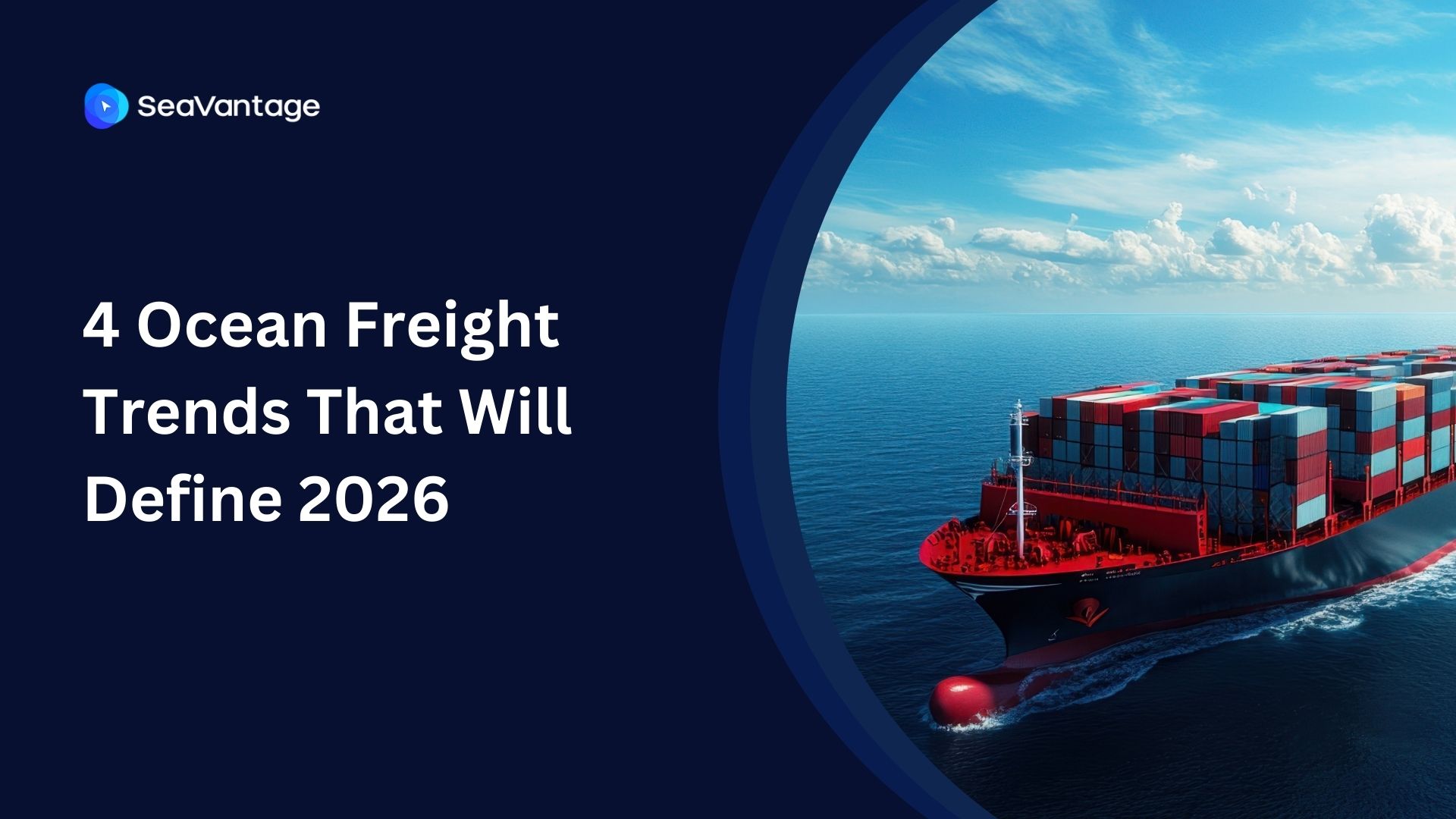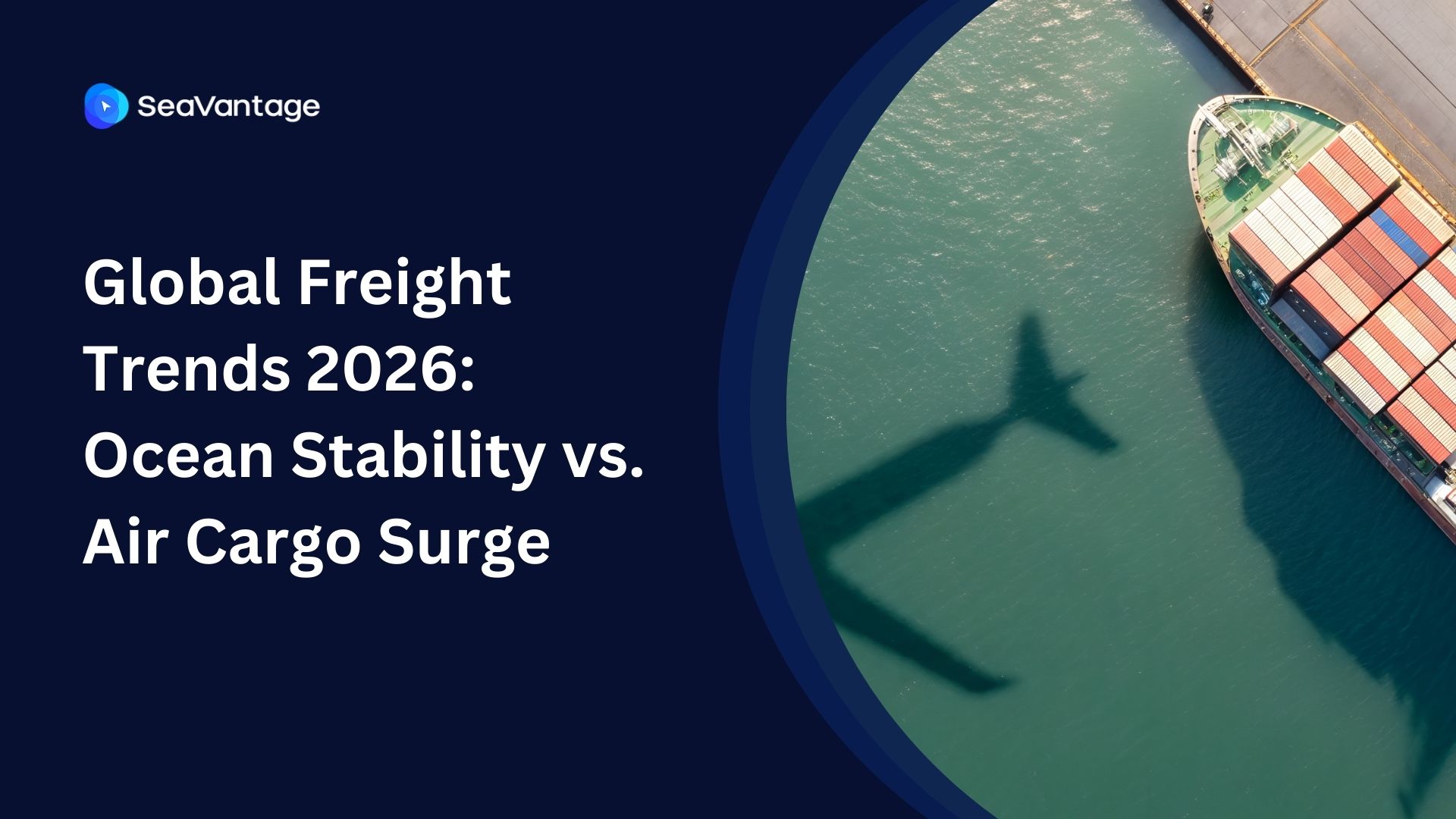From Singapore to Los Angeles: How Port Congestion Is Reshaping Global Trade 2024

Did you know that in 2021, the average waiting time for container ships at the Port of Los Angeles reached a staggering 8 days? This is a stark contrast to the 2.5 days recorded in 2019. Port congestion has become a major bottleneck in global trade, affecting everything from shipping costs to product availability. As ports like Singapore, Rotterdam, and Los Angeles struggle to keep up with demand, the ripple effects are felt across industries worldwide.
Port congestion isn't just a local issue; it's a global challenge that disrupts supply chains, increases costs, and delays deliveries. With the rise of e-commerce and the ongoing impacts of the Red Sea blockade, the COVID-19 pandemic, extreme weather events in the US, ports are under unprecedented pressure. This article explores the causes, impacts, and potential solutions to port congestion, focusing on key ports around the world.
In this article, we'll examine the root causes of port congestion, its economic and environmental impacts, and strategies to alleviate the problem. By understanding these factors, businesses and policymakers can better navigate the complexities of global trade and work towards more efficient solutions.
What is Port Congestion?
Port Congestion
Port congestion happens when the number of ships and cargo surpasses a port's capacity, causing delays and inefficiencies. This can be due to increased demand, infrastructure limits, or external events like weather or pandemics. It's a major issue in global trade, affecting ports like Singapore, Rotterdam, and Los Angeles.
Normal vs. Congested Operations
In normal operations, ports handle ships and cargo smoothly, with minimal waiting times. But when congestion strikes, ships queue up, and cargo processing slows down. This disrupts the flow of goods, leading to longer waiting times and increased costs.
Key Indicators of Congestion
- Ship waiting times: Longer queues indicate congestion.
- Container dwell times: Delays in cargo processing.
- Increased shipping costs: Higher fees due to delays.
These indicators help identify when a port is congested, impacting global trade and supply chains.
Recent Causes of Port Congestion
Red Sea Blockade and Houthi Attacks
The ongoing Houthi attacks in the Red Sea have created a new source of port congestion globally. Many shipping companies have been forced to reroute vessels around the Cape of Good Hope to avoid the dangerous waters near Yemen. This longer route adds significant time to voyages, disrupting schedules and causing congestion at ports that weren't prepared for the sudden influx of rerouted ships. For instance, ports in East Africa and the Mediterranean have experienced increased traffic and longer waiting times. Additionally, the rerouting has led to congestion at ports further away, such as those in Europe and Asia, as the entire global shipping schedule has been disrupted. This situation highlights how regional conflicts can have far-reaching effects on global maritime trade and port operations.
COVID-19 Pandemic Disruptions
The COVID-19 pandemic threw a wrench into global supply chains, causing significant port congestion. Lockdowns and health protocols led to reduced workforce availability, slowing down operations. Ports like the Port of Los Angeles saw ships waiting for days, sometimes weeks, to dock. This disruption was compounded by a surge in demand for goods as people shifted to online shopping during lockdowns.
Surge in E-commerce
E-commerce has boomed, especially during the pandemic, leading to increased cargo volumes. Ports weren't ready for this sudden spike. The congestion at the Port of Singapore is a prime example, where the influx of containers overwhelmed existing infrastructure. This surge has made it difficult for ports to keep up with the pace, causing delays.
Labor Shortages and Strikes
Labor shortages and strikes have also played a role in port congestion. With fewer workers available, ports struggle to maintain efficient operations. Strikes, like those seen in European ports, further exacerbate the issue, leading to backlogs and increased waiting times for ships.
Larger Container Ships
The trend towards larger container ships has added to congestion woes. These mega-ships require more time and resources to unload, and not all ports are equipped to handle them efficiently. The congestion at the Port of Rotterdam highlights this challenge, as it struggles to accommodate these behemoths.
Infrastructure Limitations
Many ports suffer from outdated infrastructure, which can't handle modern shipping demands. This limitation is evident in ports worldwide, where inadequate facilities lead to bottlenecks. Upgrading infrastructure is crucial to alleviating congestion, but it requires significant investment and time.
Seasonal Peaks
Seasonal peaks, such as the holiday shopping season, put additional pressure on ports. The sudden increase in cargo volumes during these times can overwhelm even the most efficient ports, leading to delays and congestion.
Extreme Weather Events
Extreme weather events, like hurricanes and typhoons, can disrupt port operations, causing congestion. These events can damage infrastructure, delay shipments, and create backlogs that take weeks to clear. Ports in regions prone to such weather face ongoing challenges in maintaining smooth operations.
Impact of Port Congestion
Supply Chain Disruptions
Port congestion can wreak havoc on supply chains, causing delays that ripple through the entire system. When ships are stuck waiting to dock, goods don't reach their destinations on time. This can lead to empty shelves in stores and frustrated customers. Businesses might face increased costs as they scramble to find alternative shipping routes or pay for expedited services. According to John Doe, a logistics expert, "The unpredictability of port congestion is a nightmare for supply chain managers trying to maintain efficiency."
Economic Impact
The economic fallout from port congestion is significant. Higher shipping rates and increased inventory costs are just the tip of the iceberg. Companies relying on just-in-time delivery systems may face production halts, leading to potential revenue losses. For instance, during the congestion at the Port of Los Angeles, shipping rates soared, impacting businesses across the United States. The Port of Rotterdam also experienced similar issues, affecting European trade. These disruptions can have a cascading effect on the global economy, affecting everything from consumer prices to international trade agreements.
Environmental Concerns
Port congestion isn't just an economic issue; it's an environmental one too. Ships idling at ports burn fuel, releasing emissions that contribute to air pollution and climate change. The longer the wait, the more fuel consumed, exacerbating the problem. The Port of Singapore, known for its high traffic, has seen increased emissions due to congestion. This not only affects the local environment but also adds to the global carbon footprint. Addressing port congestion is crucial not just for economic reasons but for environmental sustainability as well.
Current State of Port Congestion Globally
Recent Statistics on Major Ports
Port congestion has shown signs of improvement in some areas but remains a concern globally. As of early 2024, the Port of Los Angeles has significantly reduced waiting times for container ships to an average of 2.5 days, down from the peak of 8 days in 2023. This improvement is attributed to enhanced efficiency measures and a slight easing of global supply chain pressures. The Port of Singapore has also made strides, reducing container dwell times by 15% compared to the previous year, though they remain elevated compared to pre-pandemic levels. The Port of Rotterdam has largely resolved its labor shortage issues, resulting in a 20% improvement in processing times. However, new challenges have emerged, particularly due to the Red Sea crisis. Ports in the Mediterranean, such as the Port of Piraeus in Greece and the Port of Valencia in Spain, have seen a 30% increase in container traffic due to ships rerouting around Africa, leading to congestion and delays averaging 4-5 days. Additionally, East African ports like Mombasa in Kenya have experienced a 25% surge in vessel calls, stretching their capacity and increasing average berthing times to 3 days, up from 1.5 days in early 2023.
Pre-Pandemic vs. Current Situation
Before the pandemic, ports operated with relative efficiency, but the landscape has shifted dramatically. The COVID-19 pandemic disrupted global supply chains, leading to a surge in demand for goods and a corresponding increase in port congestion. In 2019, ports like Los Angeles and Rotterdam managed to handle cargo with minimal delays. However, by 2022, these ports are grappling with unprecedented congestion levels, exacerbated by ongoing labor shortages and infrastructure constraints.
Regional Variations
Port congestion varies significantly across regions. In Asia, ports like Singapore and Shanghai are dealing with high volumes of container traffic, leading to bottlenecks. In Europe, the Port of Rotterdam faces unique challenges due to labor issues and increased container traffic. Meanwhile, in North America, the Port of Los Angeles continues to struggle with high import volumes from Asia, causing significant delays. These regional differences highlight the complex nature of port congestion and the need for tailored solutions.
Case Studies of Major Port Congestions
US West Coast Ports Congestion
The US West Coast ports, especially Los Angeles and Long Beach, faced severe congestion during 2021-2022. This was largely due to a surge in imports from Asia, driven by increased consumer demand during the pandemic. The ports struggled with limited infrastructure and labor shortages, leading to ships waiting for days to unload. Major retailers like Walmart and Home Depot even chartered their own vessels to bypass the bottleneck. The congestion resulted in significant delays and increased costs for shippers, impacting the entire supply chain.
Suez Canal Blockage
In March 2021, the Suez Canal, a critical artery for global trade, was blocked by the Ever Given, a massive container ship. This incident halted traffic for six days, affecting an estimated $9.6 billion worth of goods daily. The blockage highlighted the vulnerability of global supply chains to single points of failure. It caused a ripple effect, delaying shipments worldwide and exacerbating existing port congestion issues. The incident underscored the need for alternative routes and better crisis management strategies.
Chinese Port Closures
China's strict COVID-19 measures led to temporary closures of major ports like Yantian and Ningbo in 2021. These closures disrupted global shipping schedules, as China is a key player in international trade. The ripple effects were felt worldwide, with increased congestion at ports like Singapore and Rotterdam. The closures highlighted the interconnectedness of global supply chains and the need for resilience planning. Shippers faced increased costs and delays, prompting a reevaluation of supply chain strategies.
Solutions and Strategies to Mitigate Port Congestion
Port Automation and Digitalization
Automation and digitalization are game-changers in tackling port congestion. By using advanced technologies like AI and machine learning, ports can streamline operations and reduce human error. Automated cranes and vehicles can move containers more efficiently, while digital platforms provide real-time data to optimize logistics. For instance, the Freightos platform offers tools to track delays and optimize shipping routes, helping to alleviate congestion at major ports like Singapore and Rotterdam.
Extended Operating Hours
Extending port operating hours is a straightforward yet effective strategy. By running 24/7, ports can handle more ships and cargo, reducing bottlenecks. The Port of Los Angeles, for example, has implemented 24/7 operations to manage high import volumes. This approach not only increases throughput but also spreads out the workload, easing pressure on port workers.
Improved Forecasting
Accurate forecasting is crucial for managing port congestion. By predicting cargo volumes and ship arrivals, ports can allocate resources more effectively. Platforms like Port Insight by SeaVantage provide data-driven insights to help ports anticipate and manage congestion. Improved forecasting allows for better planning and coordination, minimizing delays and disruptions.
Infrastructure Investments
Investing in infrastructure is essential for long-term congestion relief. Upgrading port facilities, expanding berth space, and enhancing rail and road connections can significantly boost capacity. The Port of Rotterdam, for instance, is investing in smart logistics solutions to improve efficiency. These investments not only address current congestion issues but also prepare ports for future growth in global trade.
Alternative Routing Options
Diversifying shipping routes can help avoid congested ports. By using alternative ports or routes, shippers can bypass bottlenecks and ensure timely deliveries. This strategy requires flexibility and coordination among shipping companies, but it can be a valuable tool in mitigating congestion. For example, during peak congestion at the Port of Los Angeles, some shippers opted for alternative West Coast ports to avoid delays.
Government Policies
Government intervention can play a pivotal role in addressing port congestion. Policies that support infrastructure development, labor efficiency, and technological innovation can create a more resilient port system. Governments can also facilitate collaboration between ports, shippers, and logistics providers to share resources and best practices. By implementing supportive policies, governments can help ensure smoother operations at critical ports like Singapore, Rotterdam, and Los Angeles.
Future Outlook
Predictions from Industry Experts
Industry experts are forecasting that port congestion will continue to be a significant challenge in the coming years. According to Dr. Jane Smith, a logistics analyst at Global Trade Insights, "The ripple effects of port congestion are likely to persist as global trade volumes increase and infrastructure struggles to keep pace." Experts suggest that ports like Singapore, Rotterdam, and Los Angeles will need to adopt more advanced technologies and strategies to manage the growing demand.
Potential Long-term Changes
In the long term, the global supply chain landscape might undergo significant transformations. Companies could shift towards more regionalized supply chains to reduce dependency on congested ports. This change could lead to a decrease in the volume of goods passing through major ports, potentially easing congestion. Additionally, there might be a push for more sustainable practices, as environmental concerns become more pressing.
Emerging Technologies
Emerging technologies are poised to play a crucial role in alleviating port congestion. Automation and digitalization are at the forefront, with ports investing in AI-driven systems like SeaVantage Port Insight Dashboard to optimize operations. Technologies like blockchain could enhance transparency and efficiency in supply chains, reducing delays. Furthermore, the use of drones and autonomous vehicles for cargo handling and delivery could revolutionize port logistics, making them more efficient and less prone to bottlenecks.
Conclusion
Port congestion is a major hurdle in global trade, affecting key ports like Singapore, Rotterdam, and Los Angeles. The causes range from increased demand and infrastructure limitations to external events like pandemics. The impacts are widespread, causing supply chain disruptions, economic losses, and environmental concerns. Effective strategies, such as port automation and extended operating hours, are essential to mitigate these challenges.
Stakeholders in the shipping industry, including policymakers and businesses, must prioritize investments in infrastructure and technology. Collaboration between ports and logistics providers is crucial to share resources and best practices. By taking proactive steps, we can alleviate the strain of port congestion and ensure smoother operations.
Addressing port congestion is not just about improving efficiency; it's about sustaining global trade and economic stability. As we look to the future, embracing innovative solutions and fostering international cooperation will be key to overcoming this persistent challenge.
2025년 9월, 주요 글로벌 항만에서 어떤 운송사가 가장 긴 선박 체류 시간을 기록했는지 확인해보세요. 트렌드를 비교하고, 지연을 파악하며, 전체 항만 데이터를 통해 운송 전략을 최적화할 수 있습니다.
2025년 8월, 주요 글로벌 항만에서 어떤 운송사가 가장 긴 선박 체류 시간을 기록했는지 확인해보세요. 트렌드를 비교하고, 지연을 파악하며, 전체 항만 데이터를 통해 운송 전략을 최적화할 수 있습니다.
2025년 7월, 주요 글로벌 항만에서 어떤 운송사가 가장 긴 선박 체류 시간을 기록했는지 확인해보세요. 트렌드를 비교하고, 지연을 파악하며, 전체 항만 데이터를 통해 운송 전략을 최적화할 수 있습니다.
iscover the 4 critical ocean freight trends for 2026, from the Red Sea reopening and fleet overcapacity to shifting global trade maps. Prepare your supply chain now.
Discover key 2026 freight market trends: Port of Houston expansion, air cargo "super peak," and ocean freight stability. Plan your supply chain with SeaVantage.
Explore November 2025 global port dwell time data. See which ports and carriers led in efficiency across Antwerp, Busan, Long Beach, Rotterdam, and Singapore.



.svg)





.jpg)

.png)